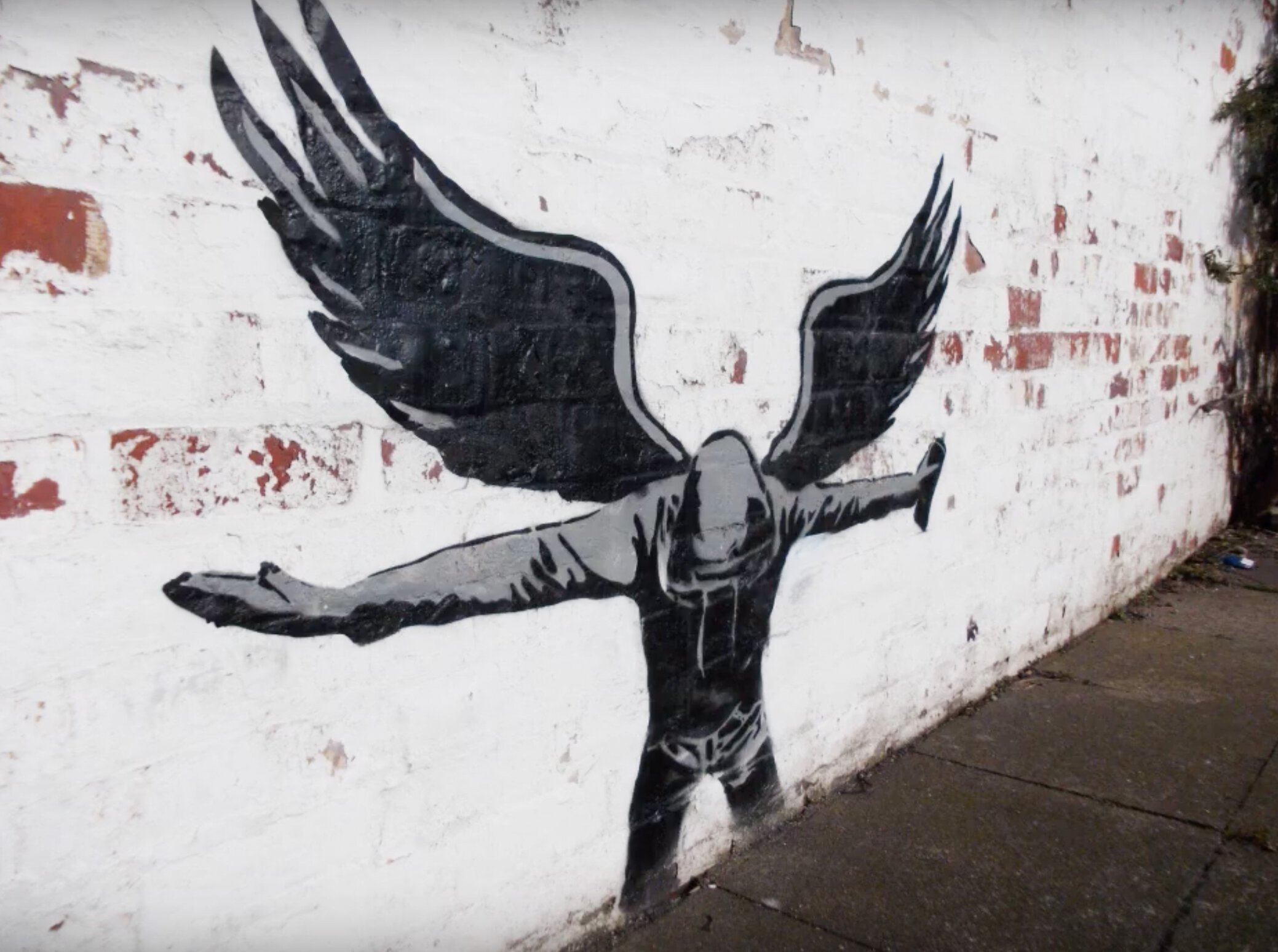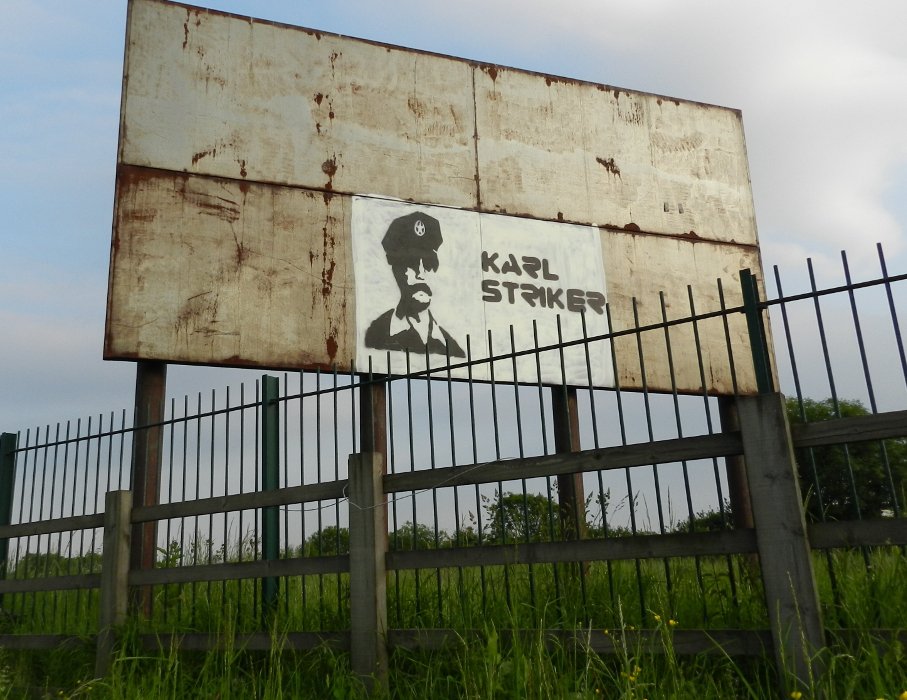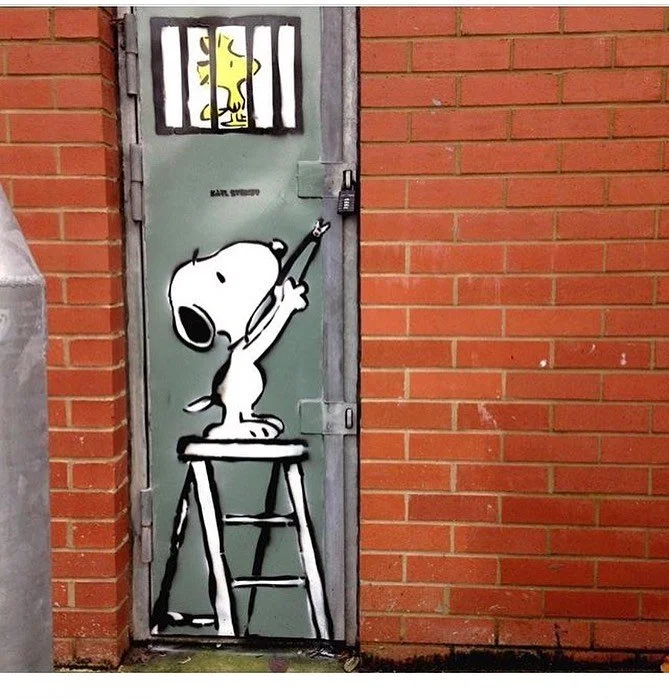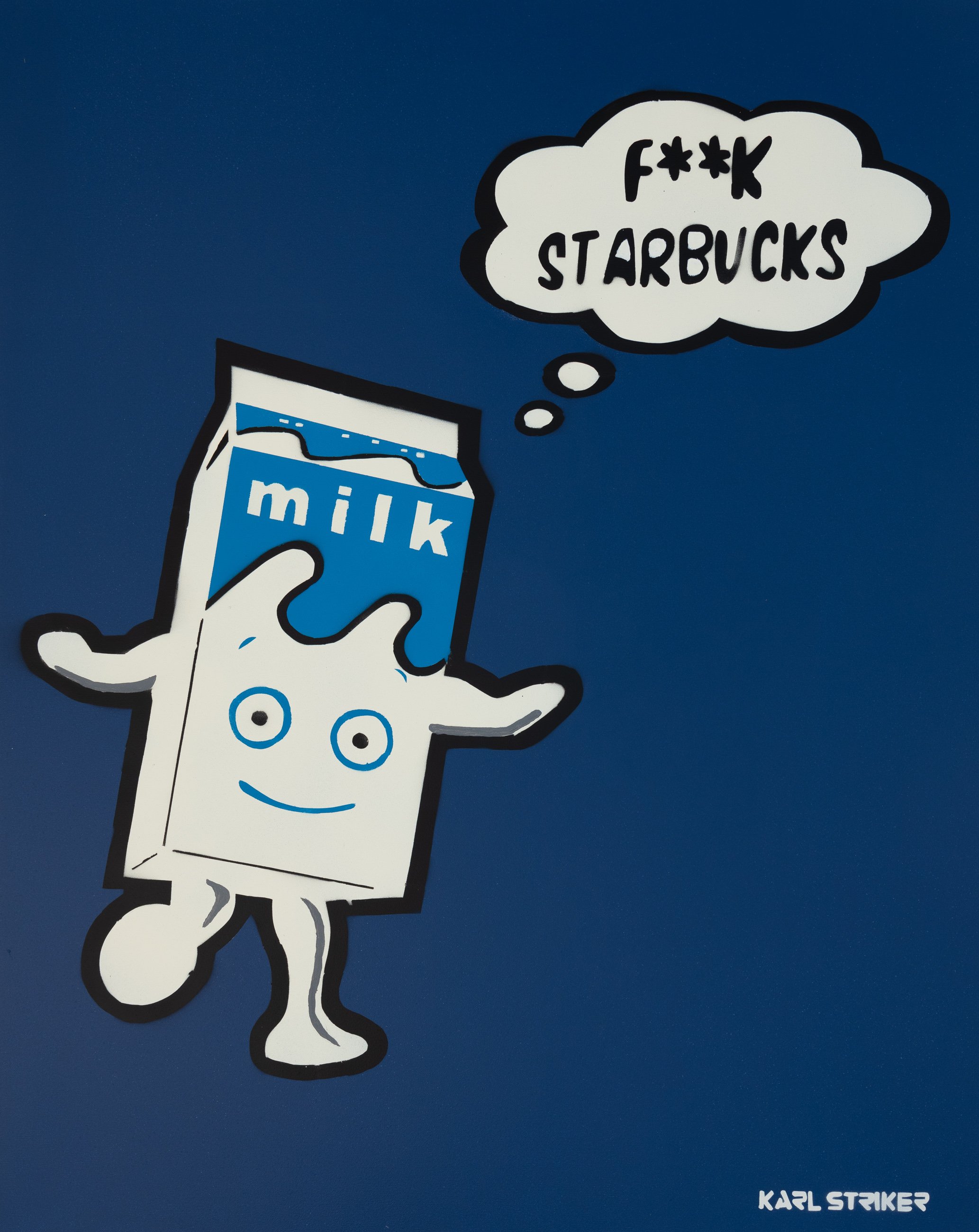
Karl Striker
 Karl Striker – mysterious artist or urban graffiti vandal? That’s the question often asked about this British street artist who goes to great lengths to maintain his anonymity. Born in 1978, the clandestine artist’s graffiti art is sometimes compared to the notorious Banksy for the guerrilla art tactics and social commentary that blur the boundary between art and the environment. Striker spray paints stencils of his own designs onto public buildings, frequently without permission, further muddling the line between art and vandalism.
Karl Striker – mysterious artist or urban graffiti vandal? That’s the question often asked about this British street artist who goes to great lengths to maintain his anonymity. Born in 1978, the clandestine artist’s graffiti art is sometimes compared to the notorious Banksy for the guerrilla art tactics and social commentary that blur the boundary between art and the environment. Striker spray paints stencils of his own designs onto public buildings, frequently without permission, further muddling the line between art and vandalism.
Long before street art emerged into modern appreciation, it was born on abandoned buildings and in urban spaces. One of Striker’s earliest graffiti works, “Location, Location, Location,” was spray-painted on the side of a dilapidated building shortly after an article was published naming Norton, Stockton-on-Tees as one of the worst places to live. Striker’s graffiti art advertising the building for sale stayed put until the building was demolished. While some of his works remain untouched, others are spray-painted over by other graffiti artists or covered up by local authorities. Striker typically photographs his art upon completion, although a portion of his works remain undiscovered to this day.
Whether creating art at midnight or in broad daylight, Striker’s key articulation is to get in and get out undetected, as he believes the disclosure of his identity would have a major impact on his ability to engage with his surroundings. His notoriety continues to spread from North East England throughout the world, as buyers from Australia and the United States are commissioning artworks and buying prints of existing works. Still, fame is not at the core of Striker’s work. He creates simply for the satisfaction of doing it.
While Striker always enjoyed creating art, he didn’t subscribe to conventional art education during his school years. Of his constantly evolving style, he says, “I think you learn from every piece you do which helps give you a little more direction in developing a new piece. Development of style in some cases can be down to sheer fluke or mistakes – apparently we are taught to learn by them.”
















